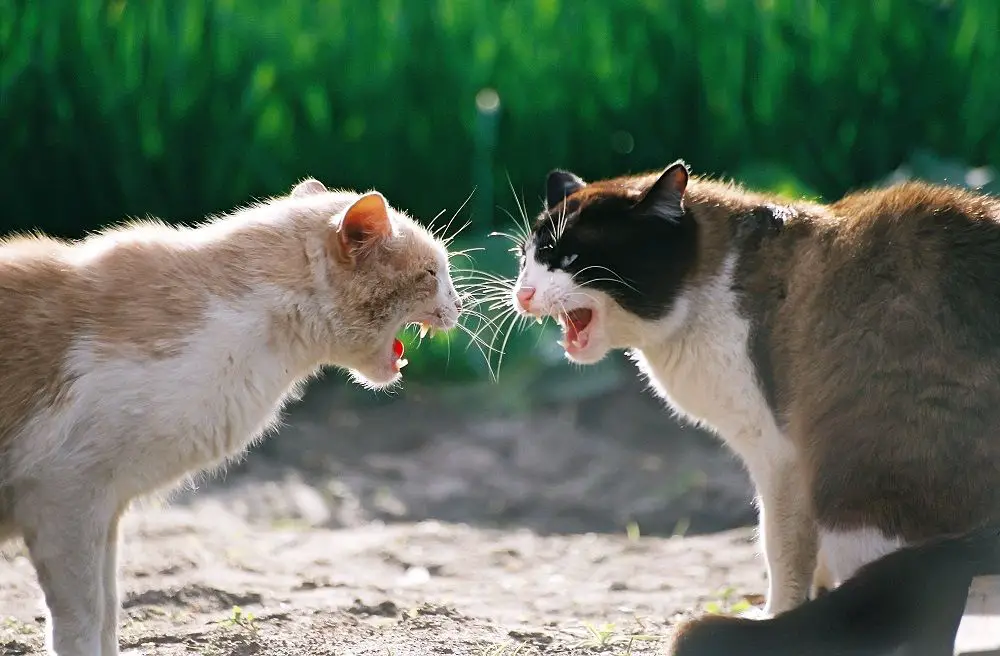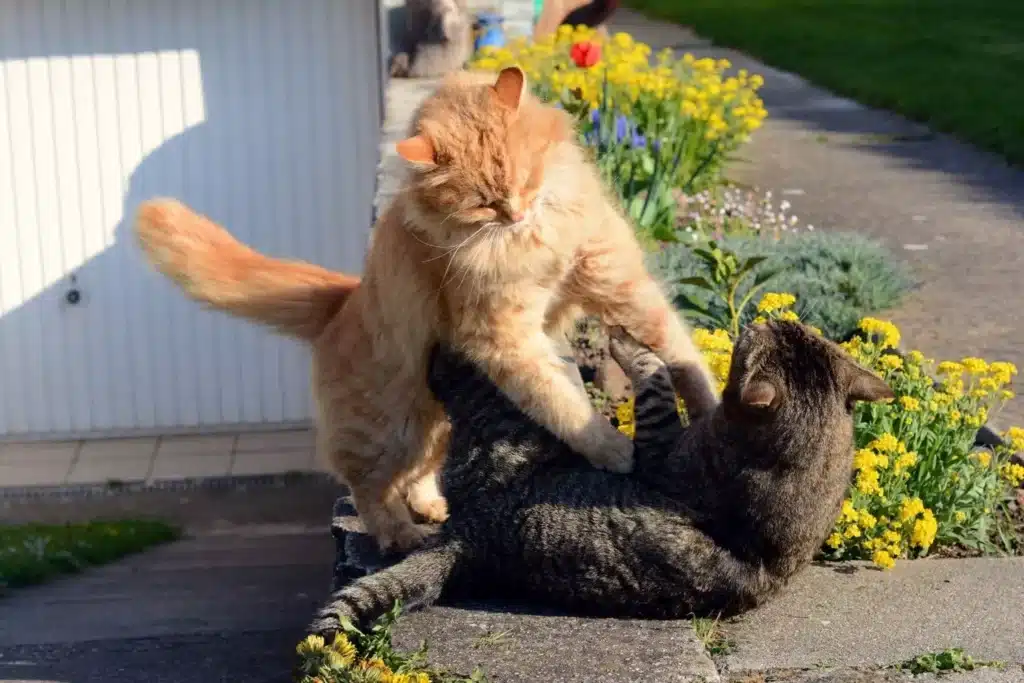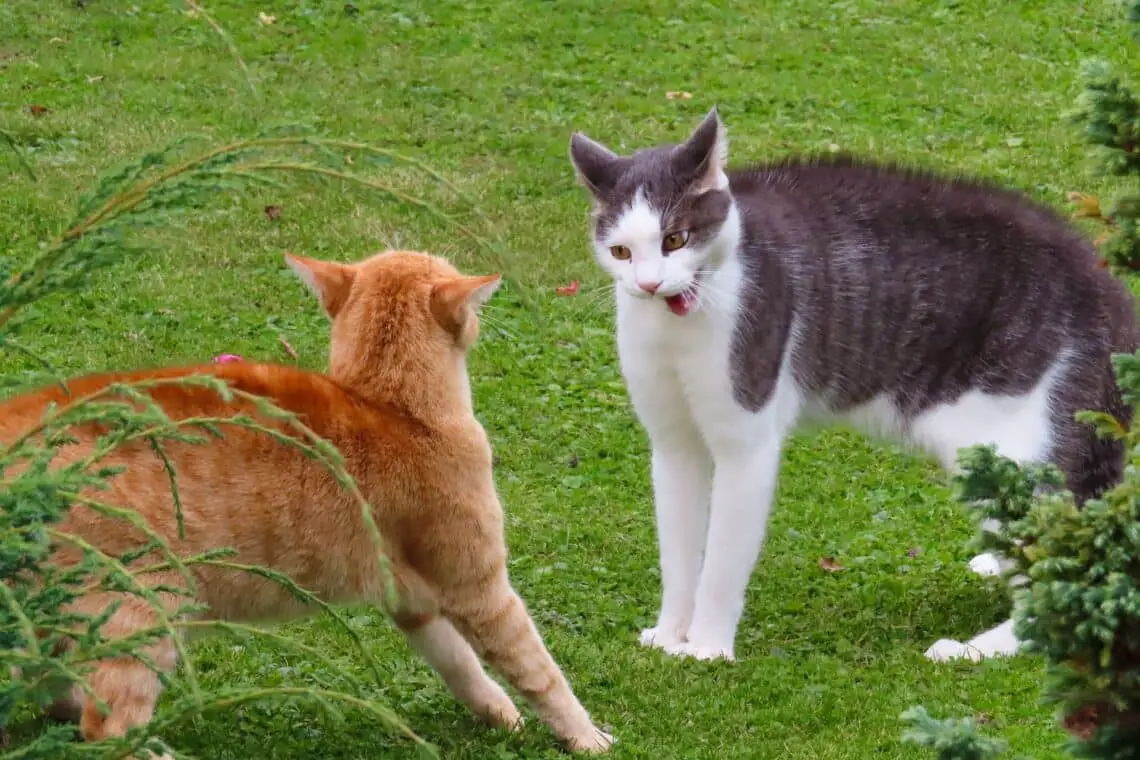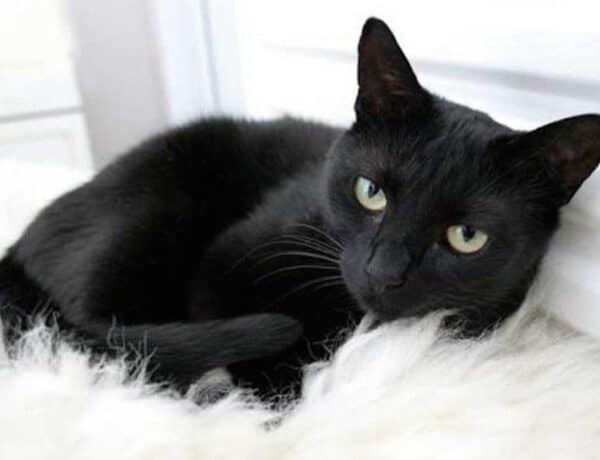Introduction:
How To Stop Cats From Fighting: Cats are known for their independent and territorial nature. While they may be loving and affectionate towards their human owners, they can often engage in aggressive behavior towards other cats. Cat fights can be a common occurrence, especially in multi-cat households or in neighborhoods with a high cat population. These fights can be loud, intense, and even result in injuries to the cats involved. If you are a cat owner or simply concerned about the well-being of the feline community in your area, it is important to understand how to stop cats from fighting.
Understanding the reasons behind cat fights is crucial in finding effective solutions. Cats may fight for various reasons, including territorial disputes, competition for resources, or social hierarchy. In some cases, fights may also be triggered by fear or stress. Identifying the underlying cause of the aggression can help in implementing appropriate strategies to prevent future fights.
Creating a harmonious environment:
One of the key steps in stopping cats from fighting is to create a harmonious environment for them. This involves providing each cat with their own space, resources, and opportunities for play and exercise. Cats are naturally territorial animals, and having enough space and resources can help reduce the likelihood of conflicts. Ensure that each cat has their own litter box, food and water bowls, and comfortable resting areas. Additionally, providing vertical spaces such as cat trees or shelves can give cats a sense of ownership and territory.

How do I stop stray cats from attacking my cat?
One of the best ways to keep a stray cat away from your cat is to make your yard as undesirable as possible to him. A motion-activated sprinklers are available that are specifically designed to deter animals. The sprinkler will spray water on the stray cat when he walks near it.
Stray cats can be a nuisance, especially when they start attacking your own cat. It can be distressing to see your beloved pet being targeted by these intruders. However, there are several steps you can take to prevent stray cats from attacking your cat and ensure their safety.
Firstly, it is important to identify the reason behind the stray cats’ aggression towards your cat. Stray cats may attack other cats due to territorial disputes, competition for resources such as food and shelter, or even due to fear or aggression. Understanding the underlying cause can help you devise an effective strategy to prevent these attacks.
Secondly, make sure your own cat is properly protected. Ensure that your cat has a safe and secure environment, such as a fenced yard or an enclosed outdoor area. This will prevent stray cats from entering your cat’s territory and reduce the chances of attacks. Additionally, consider keeping your cat indoors, especially during times when stray cats are more active, such as at night.
Thirdly, establish a feeding routine for your cat. By providing regular meals for your cat at specific times, you can discourage stray cats from approaching your property in search of food. Avoid leaving food outside for extended periods, as this can attract not only stray cats but also other wildlife.
Fourthly, consider using deterrents to keep stray cats away. There are various options available, such as motion-activated sprinklers, ultrasonic devices, or even natural deterrents like citrus peels or coffee grounds. These can help create an unpleasant environment for stray cats and discourage them from approaching your cat.
Lastly, if the problem persists, it may be helpful to consult with a professional, such as a veterinarian or an animal behaviorist. They can provide further guidance and advice tailored to your specific situation, ensuring the safety and well-being of your cat.
How do you treat a cat fight?
If you know that your cat has been in a fight, notify your veterinarian immediately. Antibiotics given within 24 hours will often stop the spread of infection and may prevent the development of an abscess.
A cat fight refers to a physical altercation between two or more cats. It is not uncommon for cats, especially those that are not spayed or neutered, to engage in fights with other cats. These fights can be quite intense and may result in injuries to the cats involved. As a responsible pet owner, it is important to know how to treat a cat fight and ensure the safety and well-being of your feline companions.
First and foremost, it is crucial to never attempt to break up a cat fight with your bare hands. Cats can become extremely aggressive during fights and may unintentionally scratch or bite you in the process. Instead, try to distract the cats by making a loud noise or using a water spray bottle. This can help redirect their attention and potentially stop the fight.
If the cats are not responding to distractions, it is best to separate them using a physical barrier. This can be done by placing a large object, such as a piece of cardboard or a thick blanket, between the fighting cats. Be careful not to get too close to the cats while doing this, as they may still try to attack each other or you.
Once the cats are separated, it is important to assess their injuries and provide necessary medical attention. Check for any visible wounds, such as scratches or bite marks, and clean them with an antiseptic solution. If the injuries appear severe or if you are unsure about how to properly treat them, it is recommended to consult a veterinarian.
After the fight has been resolved, it is important to address the underlying cause of the aggression. Cats may fight due to territorial disputes, fear, or other factors. Consider providing each cat with their own space and resources to minimize potential conflicts. Additionally, spaying or neutering your cats can help reduce their aggression and prevent future fights.
How long do cat fights last?
Most cat fights only last a few seconds, yet can feel like an eternity when you’re standing there helpless. Keep these tips in mind and you could help avert disaster the next time your cat comes face-to-face with another.
Cat fights can be a common occurrence among feline companions, especially if they are not properly socialized or if they feel threatened by each other’s presence. These fights can range from mild skirmishes to intense battles, and the duration of a cat fight can vary depending on several factors.
Firstly, it is important to note that not all cat fights are physical in nature. Cats are known for their ability to communicate through body language, vocalizations, and scent marking. These non-physical fights can last for a few seconds to several minutes, as the cats try to establish dominance or defend their territory.
Secondly, physical cat fights can also occur, where the cats engage in aggressive behaviors such as biting, scratching, and wrestling. These fights can last anywhere from a few seconds to several minutes, depending on the intensity of the conflict and the cats’ determination to establish dominance.
Thirdly, the duration of a cat fight can also be influenced by the intervention of humans or other external factors. If a cat fight is interrupted by a loud noise or physical intervention, it may end abruptly. However, if left undisturbed, the fight may continue until one cat retreats or until they exhaust themselves.
Lastly, it is important to note that cat fights can be dangerous and can result in injuries to both cats involved. It is crucial for cat owners to intervene and separate the fighting cats if the situation becomes too intense or if there is a risk of serious harm.
How do you punish an attacking cat?
A whistle or other loud noisemaker may do the trick, as long as they’re used immediately. It also helps to understand what’s causing the aggression. Your cat may not like being petted or may feel territorial after the arrival of a new feline in the home. Assess these environmental factors as well.
When dealing with an attacking cat, it is important to approach the situation with caution and consider the safety of both yourself and the cat. Punishment should never involve physical harm or cruelty towards the animal. Instead, it is more effective to redirect their behavior and provide appropriate outlets for their energy and instincts.
One way to discourage an attacking cat is to use a deterrent spray or noise. These products are designed to startle the cat and discourage them from engaging in aggressive behavior. It is important to use a deterrent that is safe for both humans and animals and to follow the instructions provided by the manufacturer.
Another approach is to redirect the cat’s behavior by providing appropriate toys and activities. Cats have natural instincts to hunt and play, and by providing them with toys that mimic these behaviors, you can redirect their energy towards more appropriate outlets. Interactive toys, such as feather wands or puzzle toys, can help keep them mentally and physically stimulated.
Additionally, it is important to create a safe and secure environment for the cat. Cats may become aggressive if they feel threatened or stressed. Providing them with a designated space where they can retreat and feel safe can help reduce their aggressive behavior. This can be a separate room or area in the house where they have access to their litter box, food, water, and comfortable resting spots.
If the aggressive behavior persists or escalates, it is recommended to seek professional help from a veterinarian or animal behaviorist. They can assess the situation and provide guidance on how to address the underlying causes of the aggression. Punishment should never be the primary approach, as it can lead to fear and further aggression in the cat.
How do you punish a cat for attacking another cat?
You don’t want to get in the middle of two fighting cats, so try to distract them instead, with a loud noise or sudden movement to break their concentration on their fight. Don’t punish your cat. Never punish your cat for aggressive behavior toward another cat. Punishment can make fearful or aggressive behaviors worse.
When it comes to disciplining a cat for attacking another cat, it’s important to remember that punishment may not be the most effective approach. Cats are independent creatures with their own unique personalities, and they may not respond well to traditional forms of discipline. Instead, it’s crucial to focus on understanding the underlying reasons for the aggression and finding ways to address them.
First and foremost, it’s essential to separate the cats involved in the altercation to prevent any further harm. This can be done by placing them in separate rooms or using baby gates to create a physical barrier between them. This will give both cats a chance to calm down and reduce the risk of additional fights.
Next, it’s important to identify the triggers that led to the aggressive behavior. Cats can become territorial or feel threatened by the presence of another cat, leading to defensive aggression. It’s crucial to observe their interactions and determine what may be causing the tension. This could include factors such as limited resources (food, water, litter boxes), lack of proper socialization, or even medical issues.
Once the triggers have been identified, steps can be taken to address them and create a more harmonious environment for both cats. Providing each cat with their own resources, such as separate food and water bowls, litter boxes, and resting areas, can help alleviate any competition or territorial disputes. Additionally, gradually introducing the cats to each other through controlled and supervised interactions can help them become more comfortable with one another.
Positive reinforcement is key when it comes to modifying a cat’s behavior. Instead of punishing the aggressor, focus on rewarding good behavior and redirecting their attention. This can be done through treats, praise, and playtime. By rewarding positive interactions and providing mental and physical stimulation, you can help redirect their energy and reduce the likelihood of future aggression.
What are some effective strategies to prevent cats from fighting?
When it comes to preventing cats from fighting, there are several effective strategies that can be implemented. Firstly, it is important to ensure that each cat has their own space and resources. This means providing separate food and water bowls, litter boxes, and sleeping areas for each cat. This helps to reduce competition and potential triggers for fights.
Another strategy is to gradually introduce new cats to each other. This can be done by keeping them in separate rooms initially and gradually allowing supervised interactions. This allows the cats to become familiar with each other’s scents and presence without feeling threatened.
Additionally, providing plenty of mental and physical stimulation for cats can help prevent fights. This can be achieved through interactive toys, scratching posts, and regular play sessions. Engaging in these activities helps to release excess energy and reduce frustration, which can often lead to fights.
Are there any specific techniques or methods that can be used to stop cats from fighting?
When it comes to stopping cats from fighting, there are several specific techniques and methods that can be effective. One important technique is to provide each cat with their own separate space and resources. This means having separate feeding areas, litter boxes, and resting spots for each cat. By doing this, you can help reduce competition and territorial disputes between the cats, which can often lead to fights.
Another technique is to gradually introduce the cats to each other in a controlled and supervised manner. This can be done by using a technique called “”scent swapping,”” where you rub a cloth on one cat and then allow the other cat to sniff it. This helps them become familiar with each other’s scent without direct contact, which can help reduce aggression.
Additionally, providing plenty of mental and physical stimulation for each cat can also help prevent fights. This can include interactive toys, scratching posts, and regular play sessions. By keeping the cats engaged and entertained, they are less likely to become bored and resort to fighting as a form of entertainment.
What are some common reasons why cats engage in fights, and how can these be addressed?
Cats engage in fights for various reasons, and understanding these reasons can help in addressing the issue effectively. One common reason is territorial disputes. Cats are territorial animals, and when they feel their territory is being invaded by another cat, they may engage in fights to defend it. This can be addressed by providing each cat with their own designated space within the home, such as separate feeding areas and litter boxes. Additionally, providing vertical spaces like cat trees or shelves can give cats a sense of ownership and territory, reducing the likelihood of fights.
Another reason for cat fights is social hierarchy. Cats are naturally hierarchical animals, and fights can occur when they are trying to establish dominance or maintain their position within a group. This can be addressed by ensuring each cat has their own resources, such as food, water, and resting areas. It is also important to provide enough attention and playtime for each cat to prevent feelings of competition and reduce the likelihood of fights.
Stress and fear can also trigger fights in cats. Identifying and addressing the source of stress, such as introducing new pets or changes in the environment, can help in preventing fights. Providing hiding spots and safe spaces for cats to retreat to can also help them feel more secure and reduce the likelihood of fights. Additionally, using pheromone diffusers or sprays can help in creating a calming environment for cats.
Are there any products or tools available that can help in preventing cat fights?
Yes, there are several products and tools available that can help in preventing cat fights. One such product is a pheromone diffuser, which releases synthetic pheromones that help to create a calming environment for cats. These diffusers can be plugged into electrical outlets and are effective in reducing aggression and tension between cats. Another useful tool is a cat deterrent spray, which can be sprayed on furniture or areas where cats tend to fight. These sprays have a strong scent that cats find unpleasant, discouraging them from engaging in fights in those areas.
In addition to pheromone diffusers and deterrent sprays, there are also products like cat calming collars and calming supplements that can help to reduce aggression and stress in cats. Calming collars are infused with natural herbs and essential oils that have a calming effect on cats, while calming supplements contain ingredients like L-theanine and chamomile that promote relaxation. These products can be particularly helpful in multi-cat households or in situations where cats are prone to fighting.
How can the environment be modified to discourage cats from fighting?
Modifying the environment is an effective strategy to discourage cats from fighting. Creating a harmonious and stress-free environment can significantly reduce the likelihood of cat fights. One important modification is to provide enough resources for each cat in the household. This includes having multiple litter boxes, food bowls, and water dishes, so that each cat has their own space and doesn’t feel the need to compete with others. Additionally, providing vertical spaces such as cat trees or shelves can give cats a sense of territory and allow them to escape from potential conflicts.
Another important modification is to establish separate areas for each cat. Cats are territorial animals, and having designated spaces for each cat can help prevent fights over territory. This can be achieved by creating separate feeding areas, sleeping spots, and even separate rooms if necessary. By giving each cat their own space, they are less likely to feel threatened and engage in fights.
Furthermore, environmental enrichment can play a crucial role in preventing cat fights. Providing interactive toys, scratching posts, and hiding spots can keep cats mentally stimulated and reduce boredom, which can be a common trigger for fights. Additionally, engaging in play sessions with each cat individually can help release excess energy and prevent frustration that may lead to aggression towards other cats.

Conclusion
There are several effective strategies to stop cats from fighting. Firstly, it is important to understand the reasons behind their aggression. Cats may fight due to territorial disputes, fear, or redirected aggression. By identifying the root cause, pet owners can address the issue more effectively.
One approach to prevent cats from fighting is to provide them with separate spaces and resources. This includes separate feeding areas, litter boxes, and sleeping spots. By giving each cat their own territory, they are less likely to feel threatened and engage in aggressive behavior.
Another strategy is to gradually introduce the cats to each other. This can be done by swapping their scents using towels or blankets, allowing them to become familiar with each other’s smell. Gradual face-to-face introductions under controlled circumstances can also help them become more comfortable with each other’s presence.
Additionally, engaging cats in interactive play can help release their pent-up energy and reduce aggression. Providing them with toys and engaging in play sessions can redirect their focus and prevent them from directing their aggression towards each other.
stopping cats from fighting requires understanding the reasons behind their aggression and implementing appropriate strategies. By providing separate spaces and resources, gradually introducing the cats to each other, and engaging them in interactive play, pet owners can create a harmonious environment for their feline companions. It is important to be patient and consistent in implementing these strategies, as it may take time for the cats to adjust and for their behavior to improve.
Learn effective techniques to prevent cats from fighting and restore peace in your home. Discover proven strategies and expert tips to stop cat fights and promote harmony among your feline companions.





No Comments